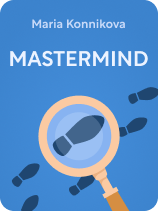

This article is an excerpt from the Shortform book guide to "Mastermind" by Maria Konnikova. Shortform has the world's best summaries and analyses of books you should be reading.
Like this article? Sign up for a free trial here.
How does Sherlock Holmes manage to recall crucial details at just the right moment? What if you could harness the power of your own memory archive?
In Mastermind, Maria Konnikova explores the concept of Sherlock Holmes’s brain attic and how we can apply his memory techniques to our own lives. She explains the autopilot mode of thinking and offers strategies for consciously creating and organizing memories.
Read more to understand and capitalize on the fascinating world of memory management.
Sherlock Holmes’s Brain Attic
Konnikova explains that Sherlock Holmes’s brain attic is essentially his extensive knowledge base. His insights into cases stem from his ability to accurately recall relevant information. Konnikova notes that Holmes achieves this by continually organizing his memories—consciously memorizing details that may aid his investigations. This ongoing memory curation provides him with a well-organized mental archive (a brain attic) of relevant information, allowing him to effectively integrate and apply his knowledge to solve complex cases. We’ll first explain how the autopilot mode of thinking hampers memory storage and recall. Then we’ll explore how to consciously create new memories.
Autopilot Mode Impedes Memory Storage and Recall
Unlike Holmes, most people don’t consciously manage their memories. Rather, they let their brains operate on autopilot, resulting in a disorganized brain attic that hampers their ability to retain and recall information. Konnikova explains that, when you’re in this mode, your brain automatically stores information based on what immediately appeals to you—whether it’s personally interesting, emotionally stimulating, or novel. This indiscriminate accumulation leads to a chaotic memory archive where the things you want to remember get buried under heaps of trivia, making it difficult to recall information when you need it.
(Shortform note: Rolf Dobelli (The Art of Thinking Clearly) expands on Konnikova’s description of a chaotic brain attic, suggesting that the memories you can recall are often inaccurate or unreliable. This happens because your brain rewrites your memories, changing details to match your evolving opinions and beliefs. As a result, you recall memories that align with and reinforce your current attitude but are often miles away from what actually happened. For example, you might’ve been indifferent to a certain political cause in the past. However, now that this cause aligns with your current political views, you might remember yourself as a passionate supporter from the onset.)
How to Create Your Own Brain Attic
Konnikova suggests that you can emulate Holmes’s memory management skills by taking conscious control of the information you commit to memory. She recommends four strategies for creating your own brain attic: set clear goals, fuel your motivation, create associations, and engage your senses.
Strategy 1) Set Clear Goals
Konnikova advises that you determine what information is relevant to your objectives and focus only on those details to avoid cluttering your memory archive with unnecessary data. For example, when studying for an exam, focus on the concepts likely to be tested rather than trying to memorize every single point in the textbook.
(Shortform note: Barbara Oakley and Terrence Sejnowski (Learning How to Learn) suggest a practical way to clarify your memorization goals: Skim to get an overview before going into specifics. For example, before reading a book, scan the headings, contents list, or index. This method provides two benefits: 1) It steers your attention toward key concepts, which allows you to pinpoint relevant details and avoid the clutter of nonessential information. 2) It helps you absorb the material better because it’s easier to embed something in your memory (like the details of the book) if you relate it to something that’s already there (the information you got from skimming). We’ll cover this concept in more detail in Strategy 3.)
Strategy 2) Fuel Your Motivation
Consider what benefits remembering the information will provide. Konnikova says that being clear about the advantages will encourage you to engage more deeply with—and thus effectively memorize—the material. For example, if you need to remember names at a networking event, think about how each person could play a role in your professional development, thereby giving each name a personal stake in your memory.
(Shortform note: Many self-improvement practitioners add that imagining future benefits is key to achieving any goal, not just memorization. They explain that you need to feel emotionally invested in your goals to achieve them. The more benefits you anticipate from achieving your memorization goal, the more inspired and motivated you’ll feel to achieve it. Therefore, when you write your list of benefits, try to make it as exciting and meaningful as possible.)
Strategy 3) Create Associations
Link your existing knowledge with what you want to remember. According to Konnikova, this leverages your brain’s tendency to organize and retrieve memories through networks of related concepts. When you associate new data with what you already know, you weave it into your brain’s existing network of memories, thereby enhancing retrieval. For example, to remember a new acquaintance’s name, associate it with a friend or celebrity who shares the same name.
(Shortform note: Oakley and Sejnowski (Learning How to Learn) suggest that you can link your existing knowledge with what you want to remember by using acronyms or mnemonics to create metaphors. You can make your metaphors even more memorable if you make them humorous. For example, if your new acquaintance’s name is Kat, you might create the humorous mnemonic “Kangaroos adore tacos.” This links what you already know (the funny phrase about kangaroos and tacos) with the new name you want to remember.)
Strategy 4) Engage Your Senses
Engage your senses when reviewing what you want to remember—for instance, by describing the information aloud or vividly imagining the details. Konnikova explains that multisensory stimulation forces you to process new information more thoroughly, leading to more effective retention and recall. For example, to engage your senses to remember a recipe, you might speak the steps out loud, visualize yourself performing each action, imagine the taste of the ingredients, the smell of the dish cooking, or gesture the movements as if you were cooking.
(Shortform note: Kevin Horsley (Unlimited Memory) adds that your sensory associations will be easier to remember if you first exaggerate them—by making them ridiculous or illogical—then animate or turn them into a narrative. For example, to remember the exact quantities of butter and sugar required in a recipe, you might imagine two overscaled blocks of butter and sugar playfully wrestling each other. The size of the blocks could correspond to their proportions in the recipe, turning a mundane measurement into an unforgettable spectacle.)

———End of Preview———
Like what you just read? Read the rest of the world's best book summary and analysis of Maria Konnikova's "Mastermind" at Shortform.
Here's what you'll find in our full Mastermind summary:
- The specific mental strategies Sherlock Holmes uses to unravel mysteries
- Why most people don’t think like Sherlock Holmes
- How to improve your memory, sharpen your observation skills, and think more rationally






